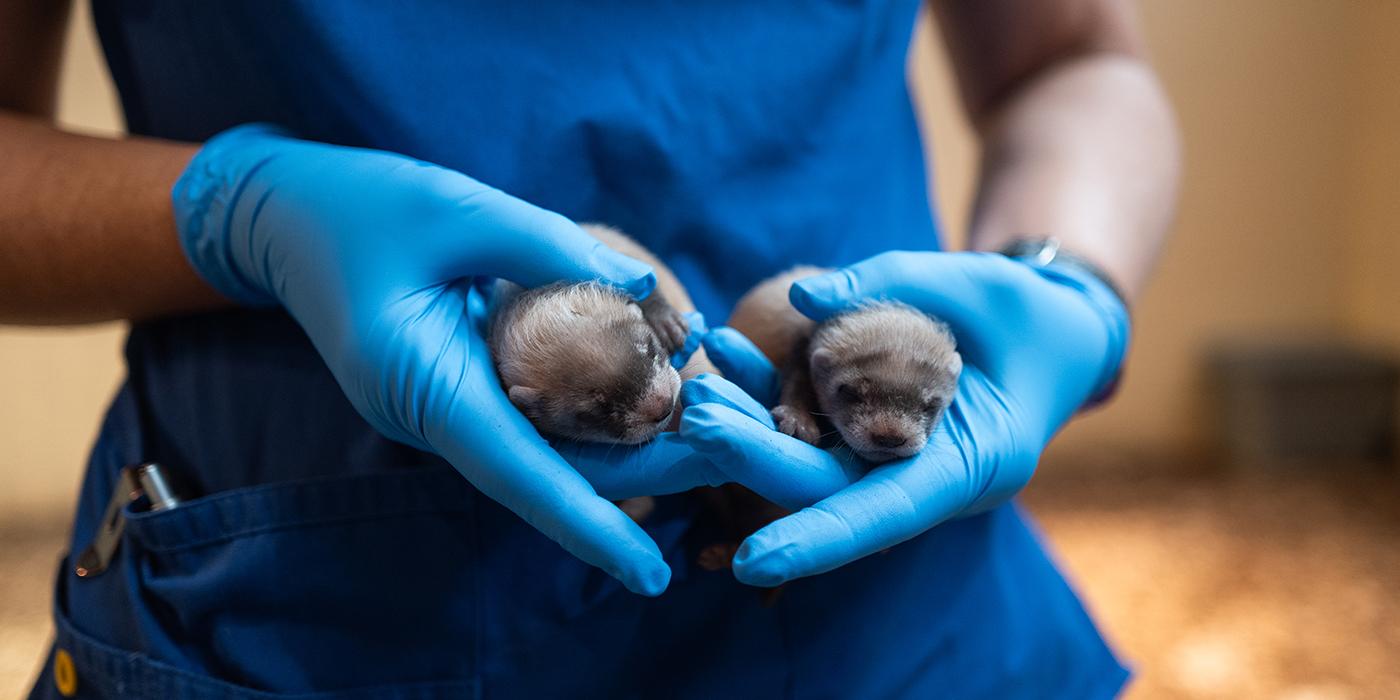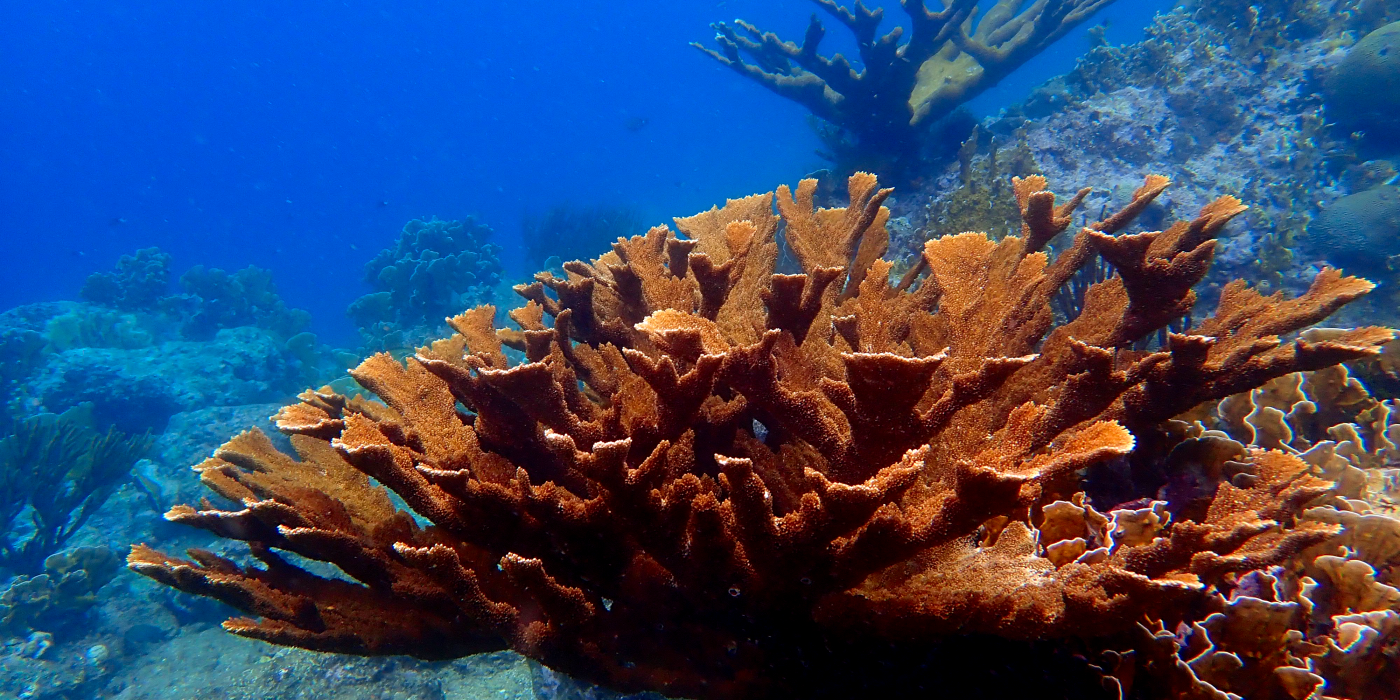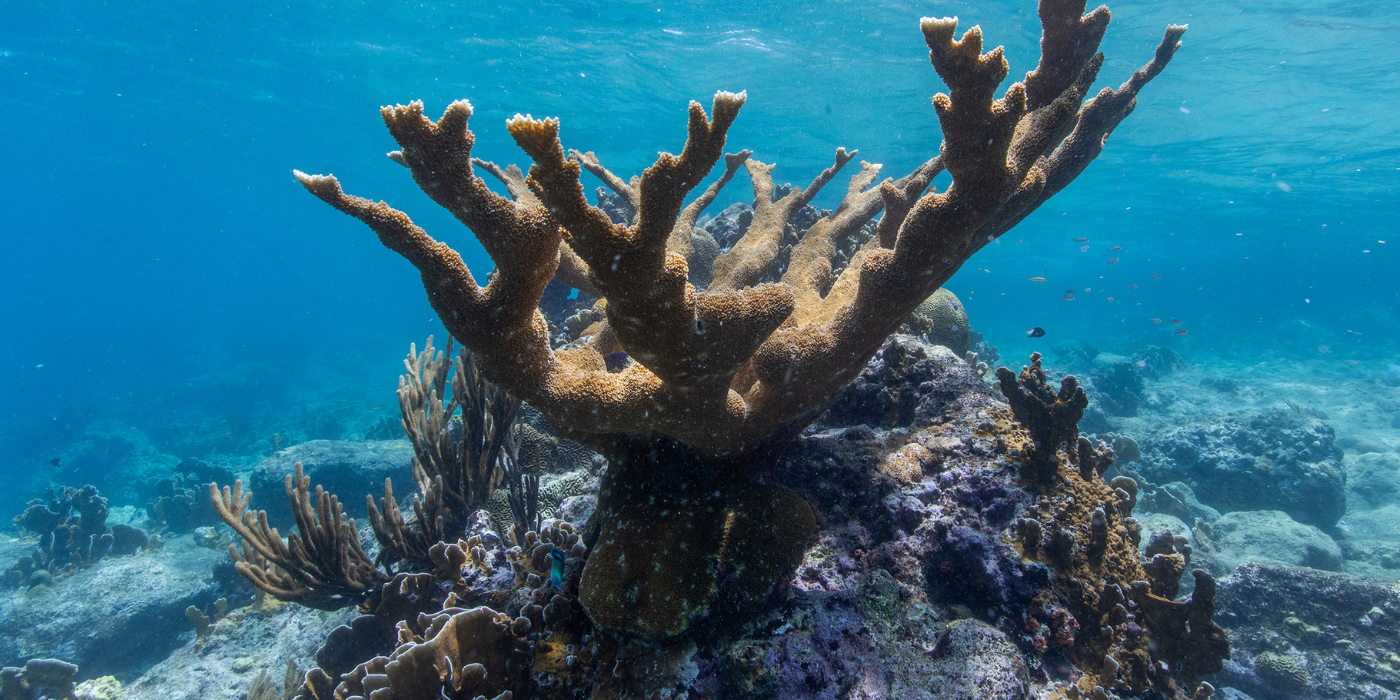Testing the Waters: Coral Nurseries and Climate Change
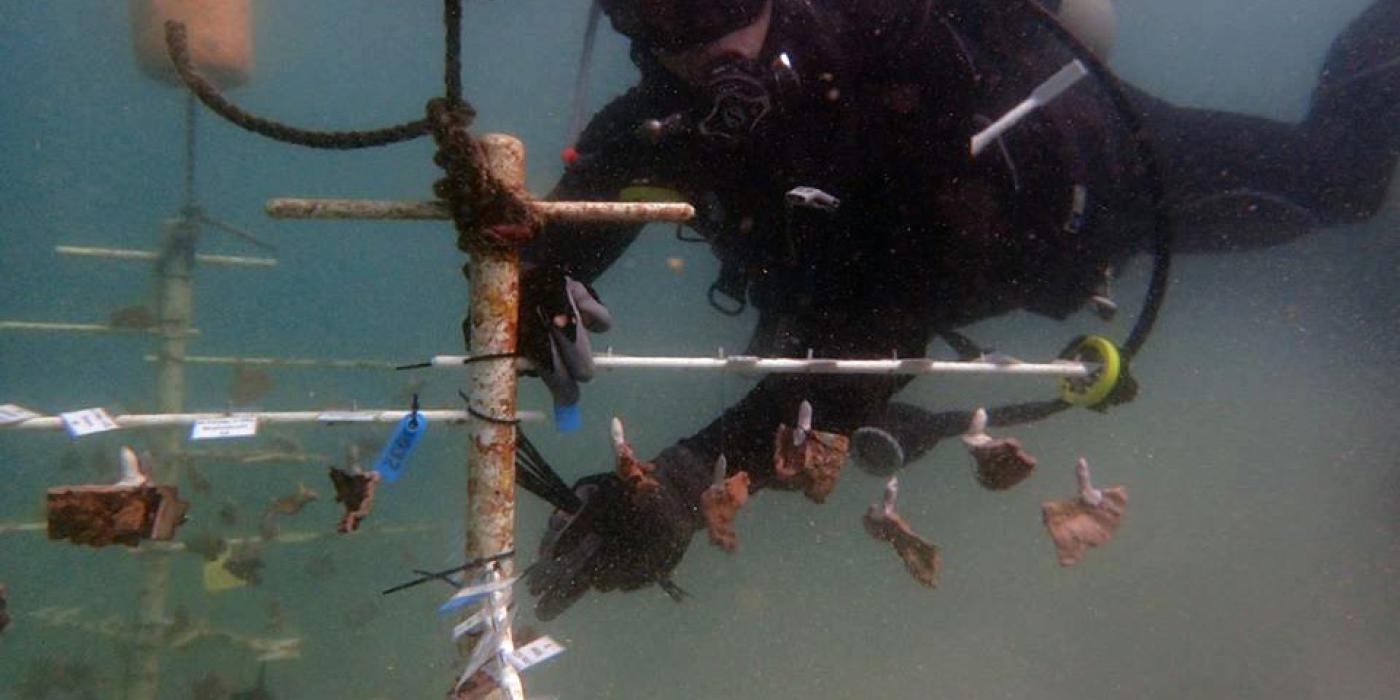
What makes (or breaks) a coral’s ability to survive rising sea temperatures? It’s a puzzling predicament, and scientists are hoping coral nurseries can help crack the code. To test the waters, they grow brown rice coral and blue rice coral in various temperatures and conditions, then reintroduce fragments into the ocean. Suspended from a “tree” above the sea floor, these corals are teaching Smithsonian Conservation Biology Institute scientist Mike Henley whether corals grown in warmer waters fare better than their cold-water counterparts.
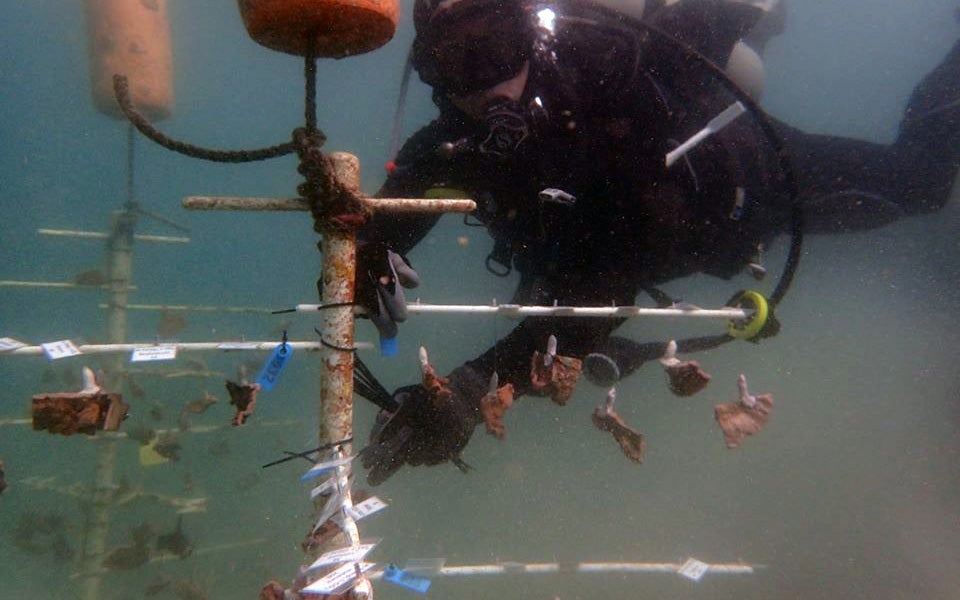
What are your favorite facts about corals?
Many people are surprised to learn that corals are animals! We compare them to plants in that if they fragment, or break apart, they are able to reproduce asexually — like how you might give the cutting of a houseplant to a friend. The difference is that when corals grow, they have the ability to reconnect and fuse together. Eventually, they can grow back into one colony.
Another fun fact is that you can set your watch by the coral spawn. In a given area, most of them have tuned their reproduction to the same hours of the same few days of the same few months every single year. How do brainless animals know to spawn all at the same time? It’s really fascinating.
What corals are you working with in the nursery?
The two corals I am working with are Montipora capitata, commonly known as the brown rice coral, and Montipora flabellata, or the blue rice coral. The cool thing about these corals is that the adults have a toxin in them, and this toxin is also incorporated into the eggs.
Not many corals have toxins, and we’re not entirely sure why these species do. It is possible that the toxin makes the adults and larvae distasteful to potential predators, or maybe it helps the young corals find a spot on the reef to settle. Whatever the reason, the toxins in the eggs makes breeding this species in the lab a bit tricky. If we have 100 egg-and-sperm bundles in our sample in a small tube, and an egg breaks, the toxin could kill the sperm instantaneously — and we would lose our entire sample!
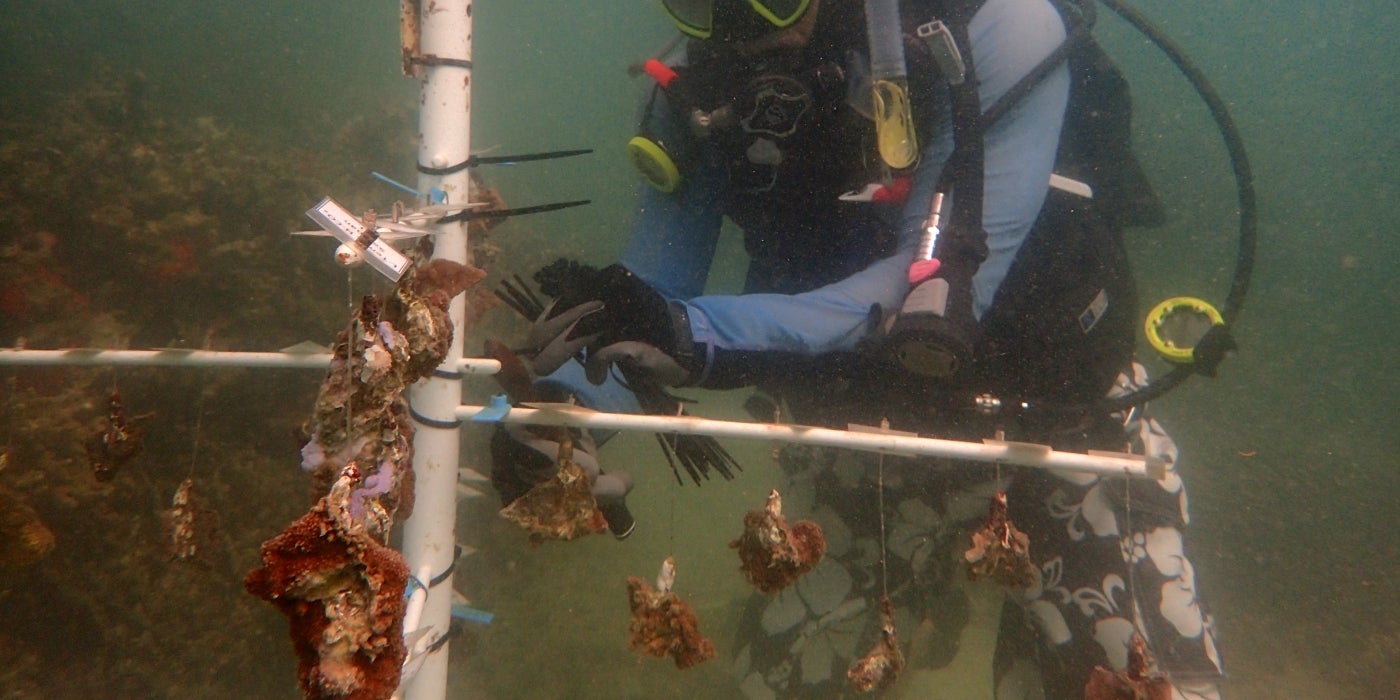
What do you find most exciting about this project?
One of the most exciting questions I’m hoping to answer with this research is whether we can predict which corals are going to do better under warming ocean temperatures. Coral reefs, as a whole, are struggling to keep up with changing environmental conditions — including temperature fluctuations — but there may be some hope that certain species are able to acclimatize and adapt faster than we think. This study is just one way to help us determine corals’ resiliency to these pressures.
How did you get the coral fragments used in this study?
I received the coral fragments in January 2019 from my colleague Chris Jury, whose long-term experiment was concluding. Conveniently enough, his lab is located right next to ours on Coconut Island!
About three years ago, Chris harvested the “parent” corals from Kaneohe Bay and elsewhere around Oahu. At the time, they were small fragments. Today, some are the size of dinner platters. He grows the corals in outdoor tanks, so they receive the same flow-through seawater and natural sunlight as the corals in Kaneohe Bay. The difference is, the tanks allow him to manipulate the water temperature and pH regime (make it more acidic or basic).
For both the brown rice coral and blue rice coral species, one parent coral was grown in water with a low temperature and low pH; another in low temperature and high pH; a third in high temperature, low pH; and the last in high temperature, high pH. I am following those same individual genotypes as Chris labeled. I’m interested to see if their growth is maintained or reversed, if there are any long-term impacts from the different conditions in which they were grown, and if they will grow at the same rate when exposed to the same ocean conditions.
From each of the parent corals (there are several per treatment), I made five small fragments. To the best of my ability, I tried to cut them to about the same size. Most are small enough to easily fit in the palm of my hand.
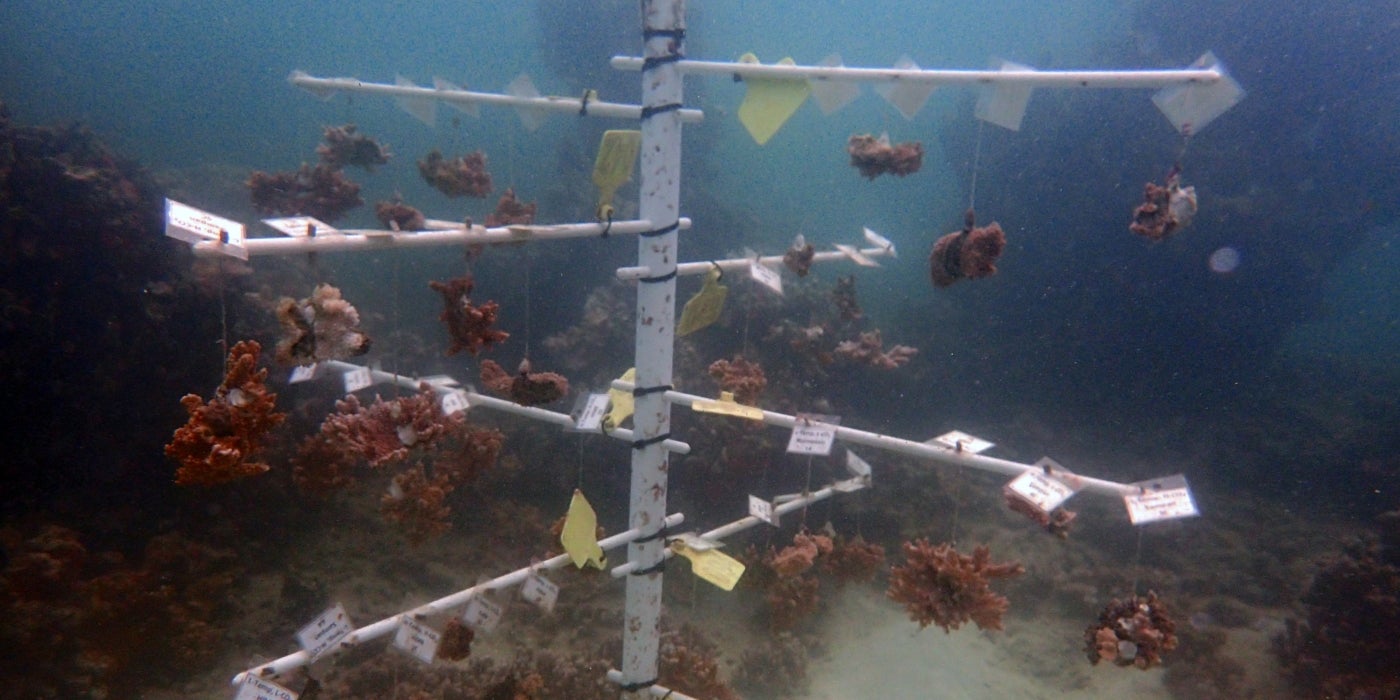
How did you build the coral tree?
The “trunk” of the tree is made from a piece of one inch-thick PVC pipe. To keep the tree upright, its base is held in the sand with a duckbill anchor, and an orange buoy is attached to the top by a thick nylon rope. The top of the buoy is about 10 feet below the water’s surface, which allows boats to go by without snagging my experiment in their wake! Holes were drilled into the trunk and inserted fiberglass rods, which serve as “branches.”
To attach the coral fragments to the tree, I wrapped a thick piece of fishing line and an aluminum crimp around the coral itself. I threaded the extra string of the fishing line through holes in the branches, leaving enough space for the coral to dangle below. To keep tabs on which coral is which, I attached an identification tag that specifies the species of coral, the conditions in which it was grown and the tag number. I hung the brown rice coral fragments on the tree in January 2019 and the blue rice corals in February 2019.
The tree sits just a short snorkel from the shores of the Hawaii Institute of Marine Biology. At least twice a month, I swim out to the site to make sure none of the coral fragments have been knocked off or loosened from the tree.
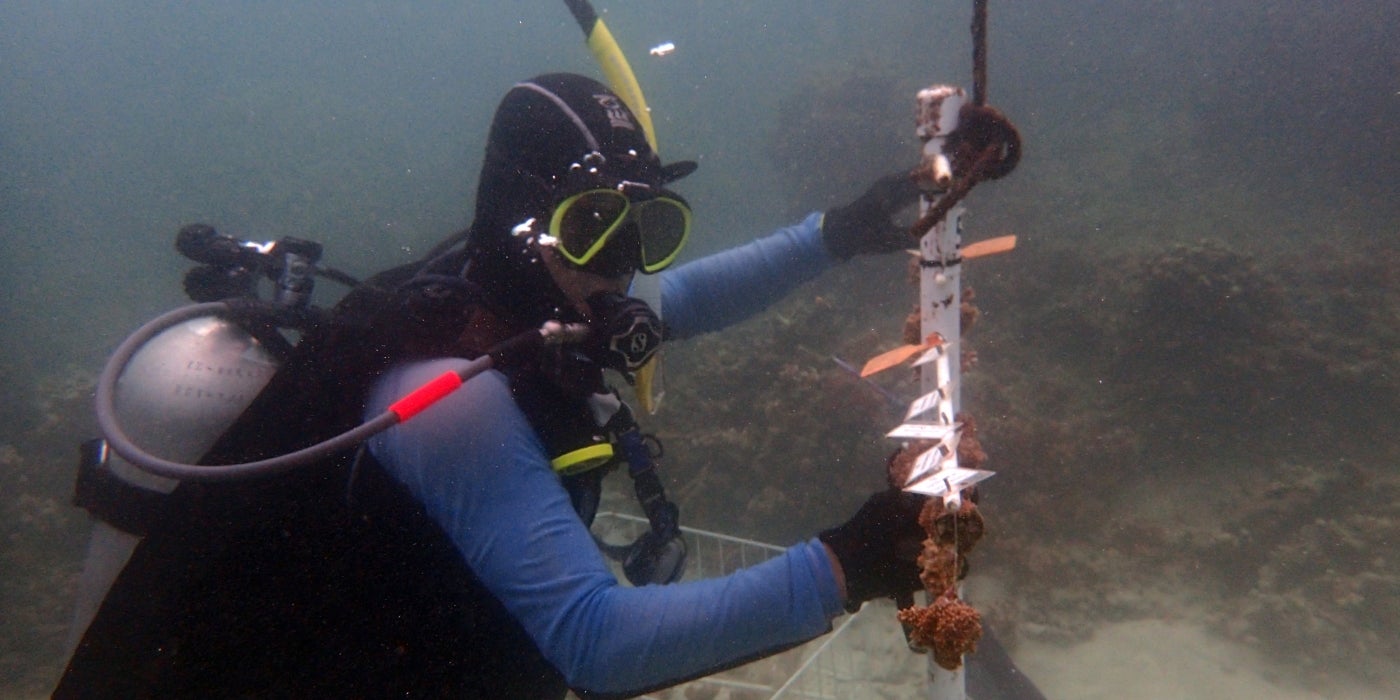
Related Species:
